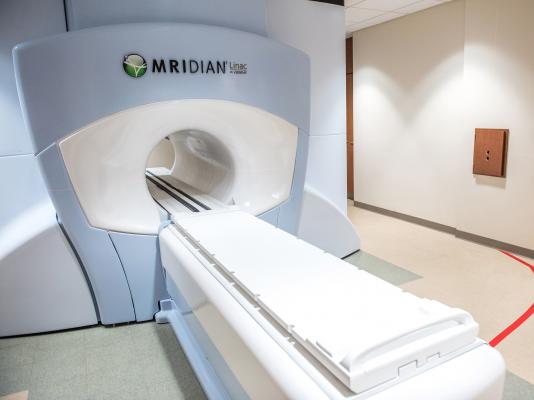
April 30, 2018 — ViewRay Inc. announced new magnetic resonance imaging (MRI) technologies under development for its MRIdian Linac radiotherapy system. Designed to improve tumor and soft tissue visualization, these enhancements to MRIdian's SmartVision MR image guidance are expected to further improve the precision by which radiation is delivered to treat cancer.
MRIdian's SmartVision allows oncologists to visualize tumors and surrounding organs with diagnostic-quality MR imaging during treatment delivery. Building on the current technology are new T1w and T2w MR pulse sequences, both being developed to improve high-definition visualization and enhance the contrast between cancerous and healthy tissues. Also being developed for MRIdian's SmartVision, diffusion weighted imaging (DWI) may be used to distinguish between tumor and normal tissues and potentially assess and predict tumor response to radiation therapy.
Other enhancements to MRIdian's SmartVision include a 2-times increase in MR imaging speed as compared to previous generation systems, stepping up from 4 frames to 8 frames per second. The latest enhancements under development also include 2 times higher image resolution and a 2 times improvement in MR signal-to-noise ratio (SNR) for brighter, more detailed anatomical imaging.
MRIdian continuously detects the shape and location of tumors and organs-at-risk (OAR) in real-time, and automatically turns radiation beams on and off when positional changes occur. Enabled by faster, higher-resolution imaging, the next-generation SmartVision will further support the clinician's ability to visualize healthy tissue and target the tumor.
ViewRay demonstrated the new MR pulse sequences, along with increased imaging speed and resolution, during the annual meeting of the European Society for Radiotherapy and Oncology (ESTRO), April 21-24 in Barcelona, Spain.
The new pulse sequences, increased image resolution and imaging frame rates are currently a technology under development and only available for sales in the European Economic Area. They are works in progress and are not available for commercial sales in the United States.
For more information: www.viewray.com


 April 25, 2024
April 25, 2024 








